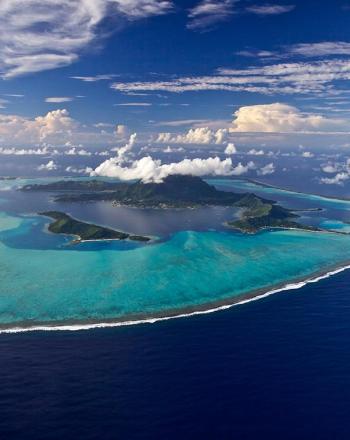Main menu
CEPF is a joint initiative of l’Agence Française de Développement, Conservation International, the European Union, Fondation Hans Wilsdorf, the Global Environment Facility, the Government of Canada, the Government of Japan and the World Bank. A fundamental goal is to ensure civil society is engaged in biodiversity conservation.
Visitez le site français コア情報の日本語翻訳を読むOr use Google Translate to translate the English site to your language:
GTranslate
Priority KBA
Priority Corridor
Other KBA
Other Corridor
Polynesia-Micronesia
Previously invested
Investment
2008 to 2013
US$7 million
Ecosystem Profile
Ecosystem Profile, 2007
Stats
CEPF Strategy Strategy
About this hotspot About
Investment
Dates:
2008 to 2013
Amount:
US$7 million
Eligible Countries
Ecosystem Profile
During CEPF's investment in the biodiversity hotspot, we awarded 113 grants. Our strategy emphasized the need to prevent, control and eradicate invasive species in 60 Key Biodiversity Areas. We promoted community-based invasive species control projects that provided employment and helped alleviate poverty. Strengthening or creating new environmental protection and management for these areas was emphasized. Almost 40 percent of CEPF-funded projects contributed to the strengthening of existing protected areas and management through the development and implementation of management plans.
CEPF targeted our funding toward protecting 67 globally threatened plant and animal species for conservation action in the hotspot. This was done in part by building awareness and participation of local leaders and community members in the implementation of protection and recovery plans for the species.
The hotspot includes all the islands of Micronesia and Polynesia, plus Fiji, scattered across the Pacific Ocean. Included in this enormous expanse are at least 4,500 islands, representing eleven countries, eight territories, and one U.S. state (Hawai'i).
Despite its expansive ocean coverage, the hotspot is one of the world's smallest in terms of land area, about the size of Switzerland.
The varied ecosystems of the hotspot—which include rainforests, temperate forests, wetlands and savannas—are among the most threatened in the world, with just 21 percent of the original vegetation remaining intact. About three-fourths of the Endangered species here are threatened by invasive animal and plant species.
The Micronesia-Polynesia Hotspot is characterized by high levels of biodiversity and species endemism; extreme vulnerability to a wide range of natural disasters; and a diversity of cultures and languages, traditional practices and customs focused on the environment. In addition, there is a high dependence by local people on marine and land resources for daily needs such as food, water, shelter and medicine.





